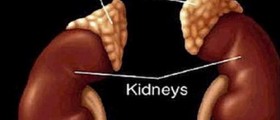
What exactly ispituitary surgery and in which cases is it needed?
Pituitary surgery is a procedure, which is sometimes anunavoidable part of the treatment of pituitary tumors. This kind of tumors develops in a pituitary gland and since it is manifested through adenomas (abnormalnoncancerous growths). It can affect the function of the gland either by causingthe abnormal production of certain hormones that have to control bodyfunctions, or by lowering the level of the same hormones. Even though it issuspected that the real cause of the disease is somehow related to the genetics,more facts about this, as well as other causes is yet to be discovered. For now,it has been confirmed that only a small number of cases is hereditary.
Because of the fact that pituitary tumors may cause pressureon the brain and thus a number of serious problems, it is necessary to visitthe doctor as soon as the first symptoms are noticed. The signs that mayindicate this are headache and loss of vision in the first place, vomiting, constipation,low blood pressure, changes in the weight without an explanation, loss of hairand even sexual dysfunction. In cases when vision is in question because theoptic nerves are pressed by the tumor, or in cases when certain hormones areproduced in much higher amount, the surgery is the only solution, and itrequires the removal of pituitary tumor.
Complications ofpituitary surgery
There are several available methods of the pituitary tumortreatment, but which one will be suggested by the doctor, depends on certainelements. For example, the type, size and the location of the tumor affect thisdecision, as well the age of the patients and their general health. There aretwo surgical approaches when it comes to pituitary surgery, and one isendoscopic transnasal transsphenoidal, while another is called transcranialapproach. During the first kind of the procedure, the tumor is removed throughthe nose and sinuses, and it is mostly used in cases of small tumors, which haven’tspread to the nerves and tissue around. For larger tumors, which are at thesame time more complicated, the second approach is used, and in such cases, theincision has to be made on the upper part of the skull.
As for the possible complications, some of them are thedamage of the pituitary gland, which will further lead to other healthproblems. Among them are also diabetes insipidus; damage of the carotidarteries; bleeding after the surgery or leakage of the spinal fluid; and even bloodclotting, which may lead to blindness.

















Your thoughts on this
Loading...